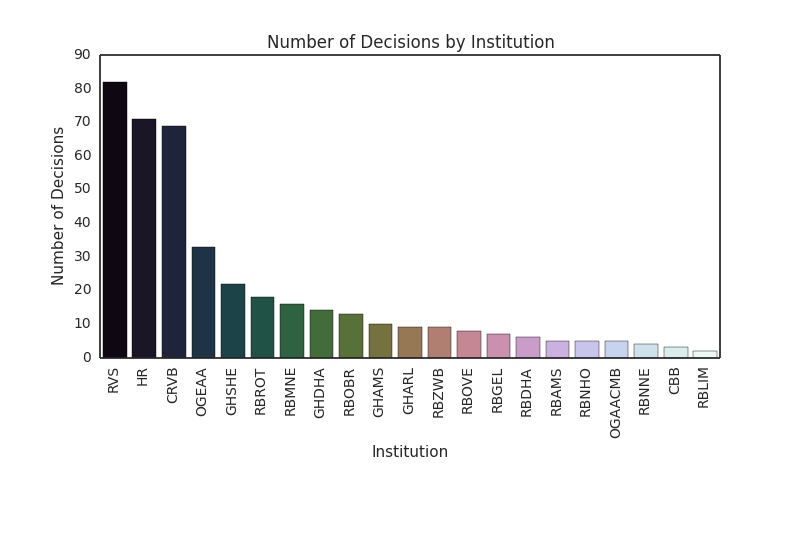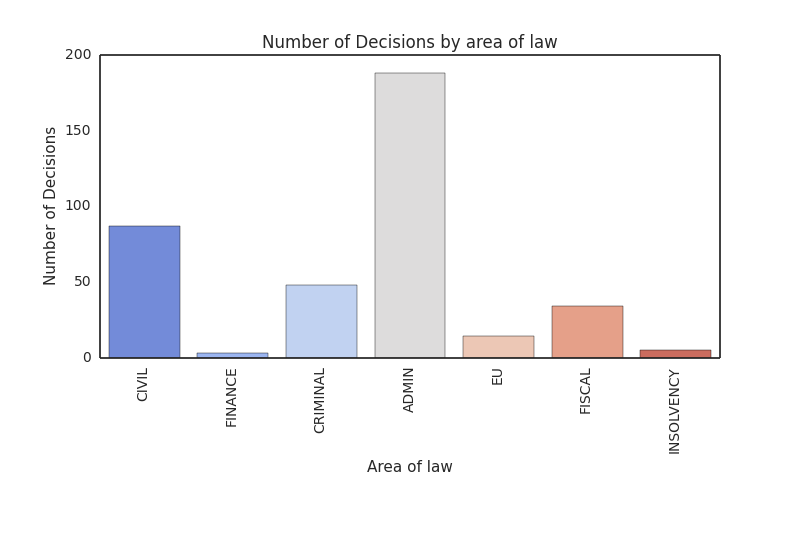The QNL will now be biweekly instead of weekly, to have a sufficient large number of cases to deal with. In this post, I provide a short overview of the main statistics in terms of cases by institution, by area of law and by throughput time. This week’s novelty: a text-based, bottom-up classifier, instead of relying on the official judicial classification.
Cases by institution
The Council of State (RVS), Supreme Court (HR) and the Central Board of Appeal (CRVB) lead the charts. Again, it must be noted that the 28 of the Supreme Court cases are RO 81 cases. A relatively high number of cases was issued by the Court of First Instance of Aruba (OGEAA), a total of 33.
Cases by area of law
Keeping my promise of introducing a novelty each QNL, this time a present a new classification. Instead of relying on the official classification, I classified the cases using a text-based, multi-attribute index (see Neshatian & Hejazi for an example). Especially useful for corporate finance lawyers are the ‘finance’ and ‘insolvency’ classes. What’s salient this week, is the number of administrative law decisions, compared to other areas. The three finance-related decisions, issued by the Court of First Instance of Rotterdam (RBROT), involve the Dutch Central Bank in its capacity of financial markets supervisor.
Cases by Throughput Time
The supermajority of all 411 cases is published on the same day or the day following the verdict. Among the outliers of this QNL are the aforementioned cases involving the Dutch Central Bank.
Next QNL
In the following post, I would like to spend time exploring the use of probabilistic language processing models on case law.



